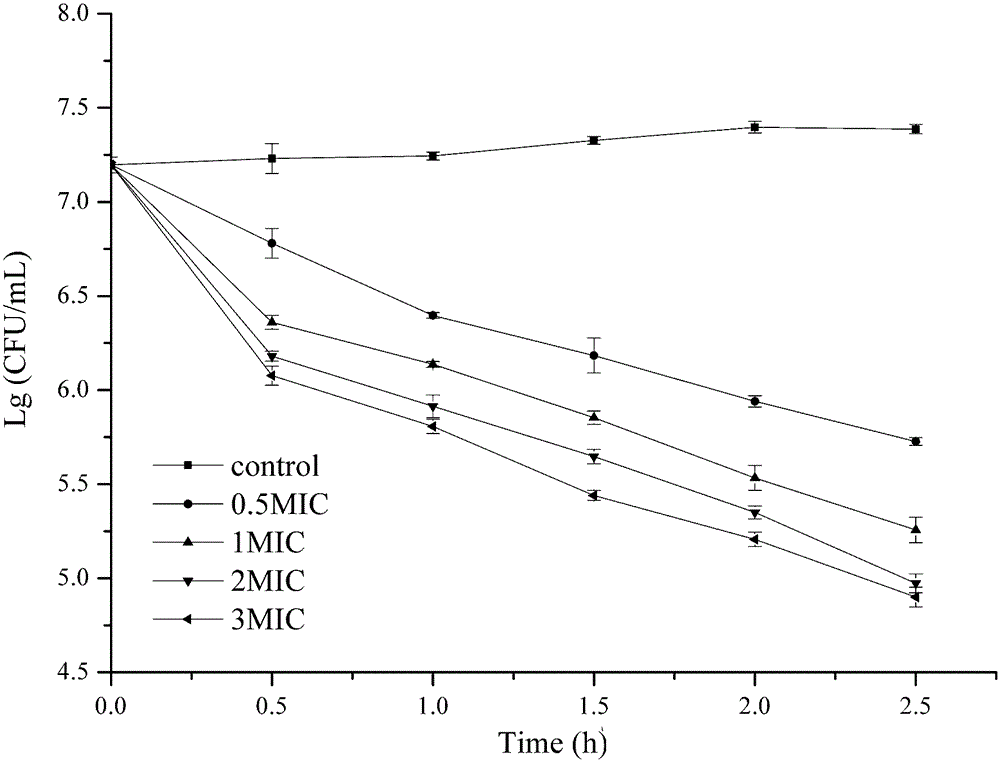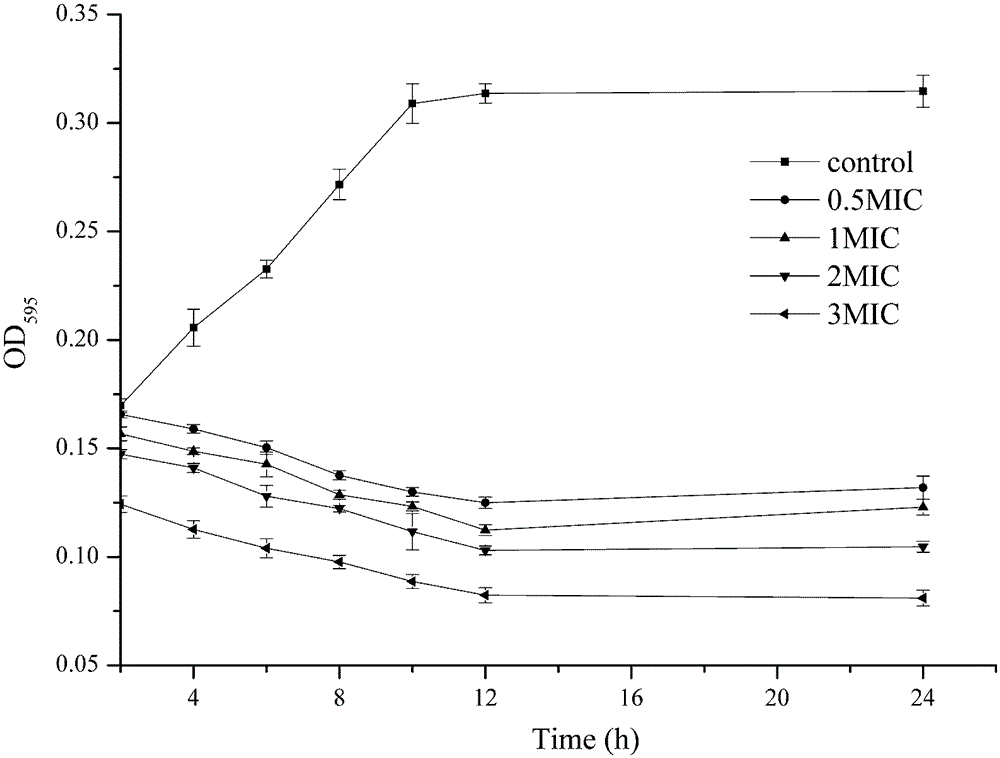Applications of lectin-modified anchovy antibacterial peptide liposome in inhibition of Listeria monocytogenes and biofilm thereof
A monoproliferative Listeria monocytogenes, biofilm technology, applied in application, food science, food preservation, etc., can solve problems such as food contamination, and achieve the effect of targeted control
- Summary
- Abstract
- Description
- Claims
- Application Information
AI Technical Summary
Problems solved by technology
Method used
Image
Examples
Embodiment 1
[0019] Example 1: Preparation of lectin-modified anchovy antimicrobial peptide liposomes
[0020] Phosphatidylethanolamine (600 mg) was dissolved in 60 mL chloroform, 940 mg glutaric anhydride and 150 μL pyridine were added to react at 20 ℃ for 5 h. The reaction solution is separated by a silica gel column to obtain glutarylphosphatidylethanolamine. Take 10 mg of freeze-dried glutarylphosphatidylethanolamine and disperse in 150 μL, add 2 mL of 0.15 mol / L sodium chloride, and sonicate for 15 s. Adjust the pH of the reaction solution to 3.5, add 20 mg of 1-ethyl-3-(3-dimethylaminopropyl) carbodiimide, and shake it evenly. After reacting for 5 min, add 1 mL of 20 mg / mL lectin in PBS solution and react at 4 ℃ for 2 h. The product was dialyzed with flowing deionized water for 24 hours, and then dialyzed with PBS buffer for 48 hours, and then frozen to obtain lectin-modified phosphatidylethanolamine. Dissolve appropriate amount of phosphatidylethanolamine lipid and cholesterol in ch...
Embodiment 2
[0021] Example 2: Determination of the minimum inhibitory concentration and minimum bactericidal concentration of Lectin-modified anchovy peptide liposomes against Listeria monocytogenes
[0022] The lectin-modified insulin liposome solution was filtered through a 0.22 μm filter and sterilized, and diluted with sterile PBS buffer. Inoculate the Listeria monocytogenes bacterial solution in a sterile TSB culture solution and incubate overnight at 37 ℃, and then resuspend the resulting bacteria to OD 600 Between 0.1 and 0.3. Add 100 μL of LTSB medium, 100 μL of test bacteria solution and 50 μL of antimicrobial peptide liposome solutions of different concentrations to a sterilized flat-bottomed 96-well plate. Incubate at 37 ℃ for 18 h. Microplate reader to measure OD in each well 600 value. In the control group, an equal amount of modified liposomes without antimicrobial peptides was used instead of the antimicrobial peptide liposome suspension. Compared with the initial value, OD...
Embodiment 3
[0023] Example 3: The bactericidal kinetics of lectin-modified anchovy peptide liposomes against Listeria monocytogenes
[0024] The Listeria monocytogenes strain was inoculated in a sterile TSB culture medium at 37°C overnight, washed 3 times with PBS buffer, and resuspended to 1.0×10 7 CFU / mL. Add lectin-modified anchovy peptide liposomes to the bacterial suspension (final concentration is 0.5MIC, 1MIC, 2MIC and 3MIC). An equal volume of PBS buffer was added to the bacterial growth control group. After mixing, incubate at 37°C, take 100 μL of bacterial suspension every 0.5 h, perform appropriate 10-fold gradient dilution, and apply 100 μL on the solid medium. Place the petri dish upside down in a biochemical incubator, incubate at 37°C for 24 hours and count. The experiment is set to 3 replicates, and the results are averaged.
PUM
 Login to View More
Login to View More Abstract
Description
Claims
Application Information
 Login to View More
Login to View More - R&D
- Intellectual Property
- Life Sciences
- Materials
- Tech Scout
- Unparalleled Data Quality
- Higher Quality Content
- 60% Fewer Hallucinations
Browse by: Latest US Patents, China's latest patents, Technical Efficacy Thesaurus, Application Domain, Technology Topic, Popular Technical Reports.
© 2025 PatSnap. All rights reserved.Legal|Privacy policy|Modern Slavery Act Transparency Statement|Sitemap|About US| Contact US: help@patsnap.com



